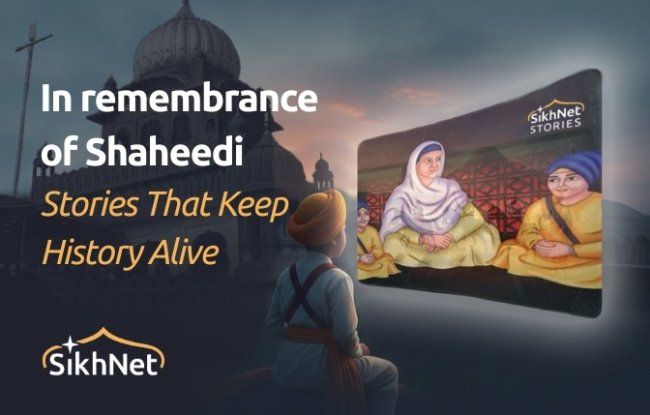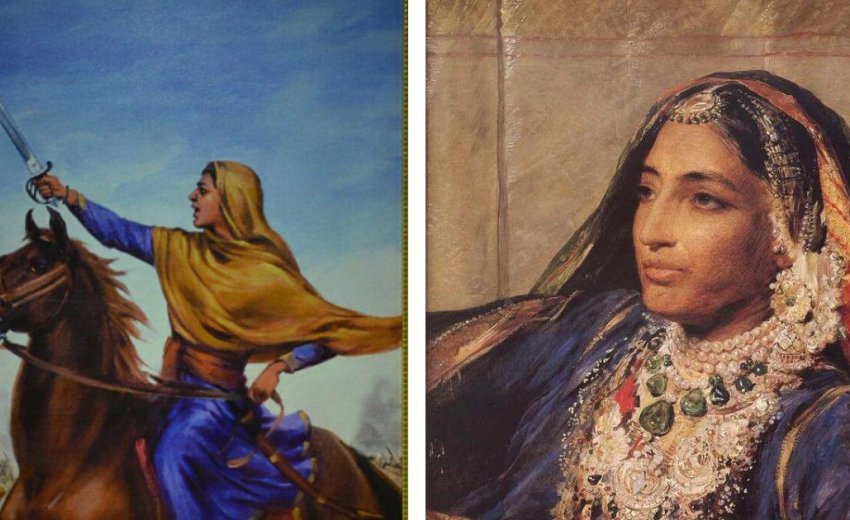Punjabi women loved jewellery, wearing a range of ornaments crafted by skilled artisans from head to toe.
Throughout history, Punjab's women have been celebrated for their beauty. In the time of the Mughal Empire, they were highly prized by kings and nobles, often sought after to adorn their harems.
Echoing tales of love and legend through the ages, was Anarkali, who captivated Prince Salim with her grace and charm. Their love story became legendary, with Anarkali even inspiring Salim to rebel against his father, Emperor Akbar. After ascending the throne as Jahangir, Salim built a mausoleum for Anarkali in Lahore, and a bustling bazaar in the city was named in her honour.
Notable Punjabi Beauties
Another notable beauty was Rana-Dil, who charmed Dara-Shikoh. Emperor Shahjahan permitted their marriage, granting Rana-Dil the same status and respect as other princesses. These tales of Punjab's enchanting women highlight their enduring allure and influence throughout history.
In the later Mughal period, Lal Kunwar, a performer, gained fame for her beauty and charisma. She had a romantic relationship with Emperor Jahandar Shah, Aurangzeb's grandson, and was honored with the title of Imtiaz Mahal, earning her the nickname "Singing Empress."
During the Sikh Empire, Moran, a young Muslim woman, captured the heart of Maharaja Ranjit Singh, earning herself the title of his favourite mistress. Another notable figure was Maharani Jind Kaur, also known as Rani Jindan, the youngest wife of the Maharaja. She was renowned for her beauty and strong personality, as depicted in surviving portraits. Sir Herbert Edwardes described her as possessing more wit and courage than any man of her time.
The tradition of zenana and purdah started during Muslim rule and lasted until the early 1900s. Punjab became part of British rule in 1849, creating a clear divide between rulers and locals. Until the early decades of the 19th century, it was commonplace for British civilians and soldiers to have native women as their bibis or unofficial wives. However, by the time the British arrived in Punjab, this practice had fallen out of favour and virtually disappeared, becoming frowned upon by society.
Some European generals serving Maharaja Ranjit Singh married Punjabi women. A notable painting from 1838 depicts General Jean-Francois Allard with his Punjabi wife, children, and servants. This painting challenged British colonial norms in India.
Sir Charles Metcalfe, a prominent East India Company civilian, lived with a Punjabi woman he met during a diplomatic mission in 1809. Their unconventional relationship, which produced three sons, was openly discussed, with Metcalfe making no effort to hide it.
Ranjit Singh, known as the 'Lion of Punjab', loved the performing arts. He had a group of 150 lovely dancing girls and hosted splendid nautch parties for his guests. W.G. Osborne, who visited Ranjit Singh's court with Governor-General Auckland, wrote in his journal about a fascinating talk he had with the Maharaja regarding these charming women.
Ranjit Singh inquired about their opinion on the women's appearance, comparing them to both Hindostani and English women. Osborne responded positively, expressing admiration for all the women and mentioning the two he found most handsome. Emily Eden, who was with Auckland during the visit to Lahore, was introduced to the Ranis. She was impressed by their beauty and elegance, noting that four of them were particularly handsome, with two being exceptionally beautiful.
Maharaja Sher Singh’s wife is also described as really beautiful, "very little, very fair with enormous black eyes, and a pretty, clever expression".
Henry Stenbach, a German soldier serving with the Maharaja, praised the courage and strength of the Hindu ranis of Ranjit Singh when they performed sati after his death. In his detailed account, he described the event vividly.
"His four queens dressed in their most sumptuous apparel, then followed, each in a separate gilt chair ... Before each of the queens was carried a large mirror, and gilt parasol, the emblems of their rank ...To the last moment of this terrible sacrifice, the queens exhibited the most perfect equanimity; far from evincing any dread of the terrible death which awaited them, they appeared in a high state of excitement and ascended the funeral pyre with alacrity".
Records of beauty
In the mid-18th century, visual depictions of the people of the subcontinent were scarce, primarily relying on secondhand accounts. British artists arriving from 1760 onward focused mainly on landscapes, portraits of the ruling class, and historical scenes of imperial significance. However, a few artists, whether professional or amateur, found inspiration in the diverse inhabitants, particularly the native women. Their work has preserved images of women from various social backgrounds in paintings and drawings.
Local artists in colonial Punjab found patrons among the British. They learned Western painting techniques and adjusted their styles to suit their patrons' tastes. These paintings, known as 'Company school' paintings, are now housed in various museums and galleries worldwide. British officials and travelers hired local artists in cities like Lahore and Amritsar to create drawings depicting Punjab's famous landmarks and its people. However, the collection of these artworks rarely includes representations of Punjabi women.
During the 19th century, several British artists visited Punjab, leaving behind valuable collections of paintings and drawings. Among them were G.T. Vigne, A.F.P. Harcourt, H.A. Oldfield, C.S. Hadinge, and William Carpenter. Many artists focused on capturing the beauty of Punjab's landscapes and historical sites. Even Emily Eden, a skilled artist with access to royal settings, didn't paint Punjabi women in her notable work 'Portraits of the Princes and people of India,' which showcased figures like Ranjit Singh and his sons. Some artists managed to sketch women from the Punjab hills who didn't follow the purdah tradition. However, women from the plains strictly adhered to purdah, avoiding exposure to male artists, whether local or foreign.
True-to-life depictions of upper-class Punjabi women are scarce. One local artist painted Maharani Jindan, who briefly left purdah to act as regent for Duleep Singh. Public entertainers and lower-class women were more willing to pose for artists, often in exchange for monetary reward. Occasionally, artists could sketch village women since the purdah custom was less prevalent in rural areas.
Punjabi women loved jewellery, wearing a range of ornaments crafted by skilled artisans from head to toe. Emily Eden wrote in her journal about the stunning costumes and jewellery worn by royal women in Lahore. Their heads seem big because they wear lots of pearls on them. Their nose-rings cover most of their faces and reach almost to their waists. A diamond crescent hangs from their noses, with strings of pearls and pearl tassels, along with rings of pearls with emerald drops.
In the past, Punjabi women wore silver gauze veils, shiny tunics, and tight trousers as part of their attire. Back then, painters used to create portraits, but with the arrival of cameras, commercial photography became more popular. However, many Punjabi women hesitated to have their photos taken by male photographers. It wasn't until the 20th century, with the rise of education and the empowerment of Indian women, that traditions like purdah (seclusion) started to fade away, and women became more comfortable with photography.
An enterprising Punjabi lady in Lahore set up a special photo studio for women, sometime in the late 1930s.
Romanticising image of Punjabi women
Punjabi women have long been celebrated in the tales and love stories of Punjab, such as Heer Ranjha, Sohni Mahiwal, and others. They are admired for their beauty, grace, and allure, often depicted with fair or wheatish complexions and rosy cheeks. Poets and singers have praised their attractive features and strong health. This brings to mind an old Punjabi song:
‘shishey nu(n) tarrerh pai gayi / wal wondi ne dhyan jadon marya’
(The force of her gaze drove a crack in the mirror as she looked at it while combing her hair.)
A mid-nineteenth century folk song portrays a young maiden from the Majha region of Punjab thus:
majhe di mastani jatti / Amarsar navan chali / Amarsar jaiyai te ki / kuj liahiye / mauli, dandasa, kangi patti / patti oh maaye -- majhe / di mastani jatti
(The happy go lucky village maiden is going to Amritsar for a dip in the sarovar, and from there she would do her shopping of red thread, dentifrice, comb and ribbon).
Young couples often use romantic terms like "chann" for the lover, meaning the moon, and "soni" for the beloved, meaning beautiful or gilded. They express their feelings with extraordinary similes, like comparing the beloved to a rose bud. For instance, they might say:
sun kurriye Punjab diye, / dukh tainu kis gal da hai soniye / sun kaliye gulab diye
In the game of love, both the lover and the beloved are seen as equal partners, often referring to each other as 'haani', meaning companion or partner.
For over a century, women in both rural and urban Punjab have favoured the Suthan Jhaga or Shalwar-Kameez as their traditional attire. Despite changing fashion trends, this outfit has stood the test of time and is now widely embraced by women of all ages across India. The chunni, or head cover, adds a touch of grace to the ensemble.
Punjabi women were very careful about how they looked. They had their ways to make themselves look beautiful. They used things like traditional makeup and beauty stuff for their hair, eyes, eyebrows, teeth, lips, and hands. For their face, they used a special kind of pomade. It was made from finely ground orange peels mixed with besan or a paste made from wheat flour, butter, cream, and ghee. They also used kaajal to make their eyes look prettier.
There's a funny couplet that goes like this: ‘kinwain pavan main akhian ch kajala, ke akhian ch tu wasda’.
"How can I put kaajal in my eyes because you are residing there?" It's a playful way of expressing how someone's presence makes it impossible to do something as simple as applying kaajal.
*Based on an article by Pran Nevile, published in sikhchic.com on 10th October 2013

